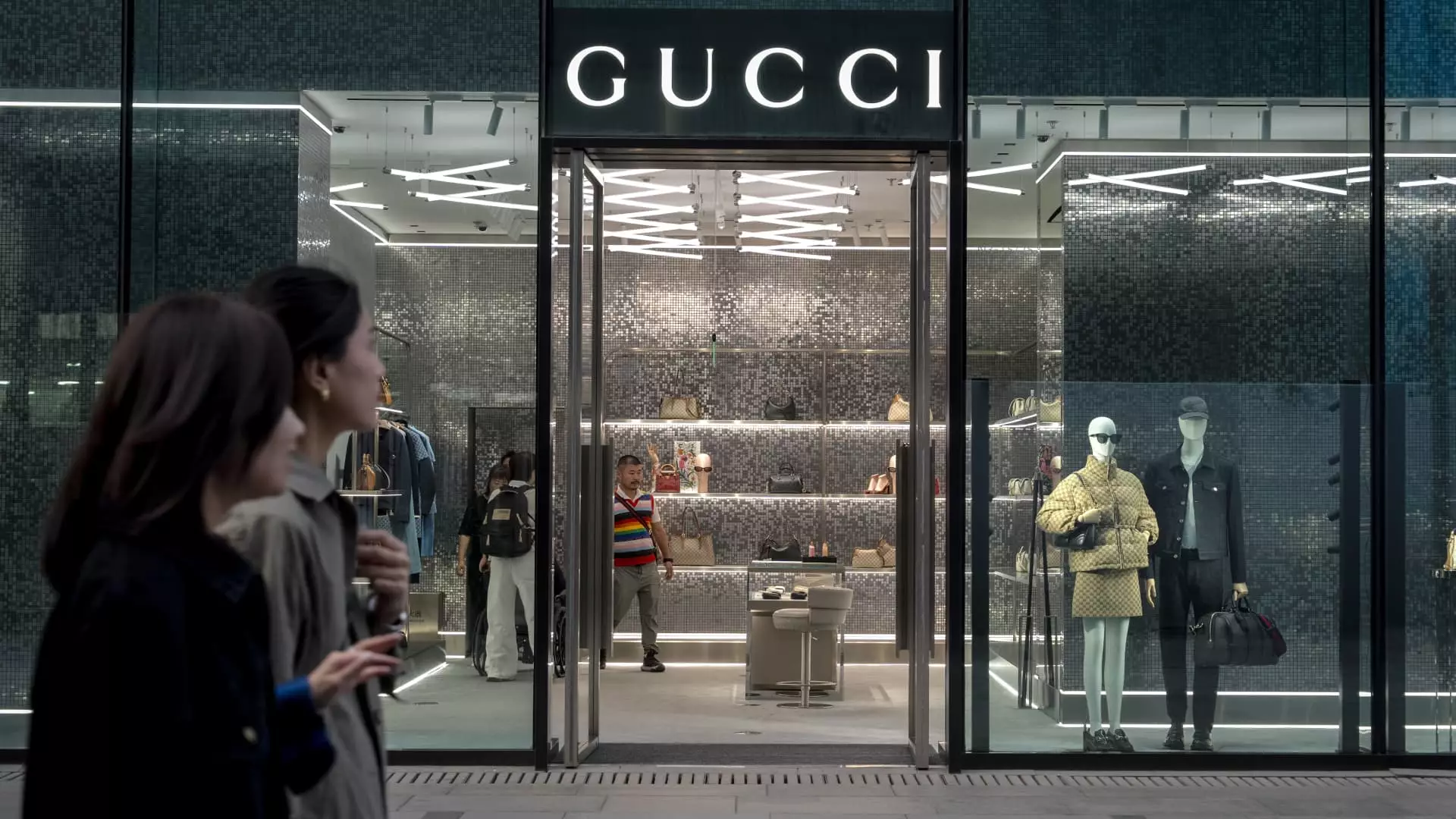On a recent Tuesday, Kering, a leading name in the French luxury goods sector, unveiled its fourth-quarter results for 2023, revealing a mixed bag of performance metrics. Despite surpassing analyst expectations, the company’s sales still fell short of the previous year’s figures. Kering reported a revenue of €4.39 billion ($4.52 billion) for the last quarter, signifying a significant 12% decline from a year earlier. This revenue figure narrowly edged past the predicted €4.29 billion outlined by LSEG analysts, suggesting that while Kering’s sales performance may not have been catastrophic, it certainly highlights the declines impacting the luxury goods segment.
A critical area of concern was Kering’s flagship brand, Gucci, which saw its sales drop dramatically by 24% year-on-year, yielding revenues of €1.92 billion during this period. As Gucci’s performance accounts for almost half of Kering’s total revenue, these figures indicate that the once-celebrated brand is now facing serious headwinds that could threaten its longstanding reputation in the luxury market.
Annual Sales and Operating Income Declines
Looking at the broader picture, Kering’s full-year results mirrored the quarterly downturn, with total sales for 2023 declining 12% to €17.19 billion compared to expectations of €17.09 billion. Furthermore, the company’s operating income was halved from the previous year, landing at €2.55 billion. This downward trend underscores the pressing challenges that Kering faces as it strives to maintain profitability amid shifting consumer preferences and economic uncertainties.
During the announcement of these results, Chairman and CEO François-Henri Pinault expressed optimism regarding the company’s strategic initiatives. He emphasized that Kering is committed to evolving its brands, enhancing their desirability, and laying a foundation for future growth. However, this commitment comes against a backdrop of varying consumer sentiments, especially within critical markets such as China, which is essential for luxury sales.
Much of Kering’s current predicament can be linked to broader market dynamics. As luxury goods face a downturn in consumer spending, particularly among Chinese shoppers—who have historically driven demand—the pressure mounts for Kering and its brands. Recent performance from other luxury giants, such as LVMH, has similarly raised alarms, indicating that the sector is not entirely stabilizing, despite initial expectations for a turnaround.
In the face of uninspiring market results, Kering has shown some resilience. The company noted slight improvements in sales figures from its other brands, including Yves Saint Laurent and Bottega Veneta, especially in the Asia Pacific region and North America. These glimmers of hope stand in contrast to the struggles faced by Gucci, highlighting the unprecedented volatility within the luxury segment.
Leadership Changes and Future Outlook
As Kering strives to navigate these challenges, significant changes in leadership have been made, particularly at Gucci. The announcement of design chief Sabato De Sarno’s departure marks a pivotal moment as new CEO Stefano Cantino seeks to reposition the brand. With De Sarno’s brief tenure of less than two years and the previous reign of Alessandro Michele being characterized by opulent maximalism, the brand’s direction faces critical scrutiny.
Industry analysts, like Simone Ragazzi from Algebris Investments, suggest that the appointment of a new creative director could signify a much-needed reset for Gucci. Nevertheless, lingering concerns regarding the brand’s legacy and market perception remain, suggesting that investor sentiment may still be tempered by caution as observers await tangible signs of revitalization.
Following the release of Kering’s financial data, stock market reactions displayed volatility; shares initially surged by 6% but later stabilized with a modest 0.5% gain. However, the broader trajectory for Kering’s stock in 2023 remains challenged, with shares down approximately 2.5% throughout the year, reflecting the substantial decline witnessed since early 2023.
Kering’s latest financial disclosures paint a picture of a luxury group confronting significant hurdles. As it recalibrates its brand strategies, certain hopeful indicators remain alive—yet the path back to previous highs may well demand substantial innovation and responsiveness to ever-shifting market trends. The focus now turns to the impending design changes and their potential impact on the brand’s trajectory, making this a crucial period for Kering and its ambitious future endeavors.

